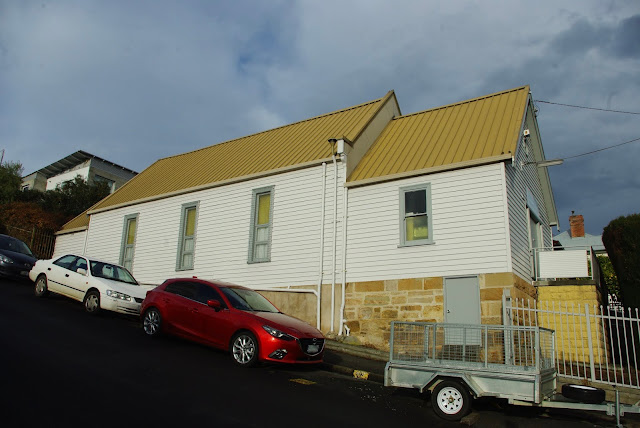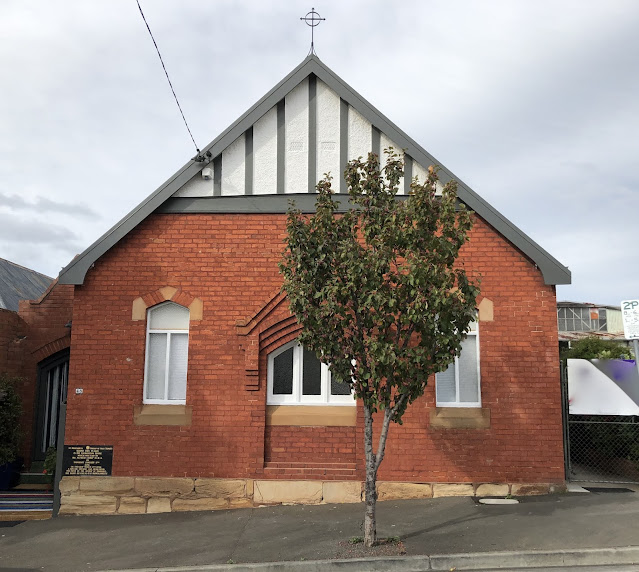No. 1008 - West Hobart - St John the Baptist (1856-1998)

West Hobart is an inner-city suburb of Hobart immediately west of the city centre. The suburb occupies the high ground below Knocklofty Hill. The West Hobart parish was former in 1844 being carved from sections of St David’s and Holy Trinity parishes. The parish’s first church was built in 1845 [ see No. 992 ] and this building became a Sunday school following the opening of St John the Baptist in 1856. The ‘new’ church was built at a cost of £4300 and was designed by Frederick Thomas who modified the original plans drafted by George Edmund Street. Construction began in December 1852 and building was completed in three years. The church was consecrated by Bishop Francis Nixon in May 1856. In 1902 problems with the foundations which supported the chancel resulted in this section of the building being demolished and rebuilt. The rebuilt section was designed with additional height and included an organ chamber and a vestry. The church is built in the Gothic-Revival style. A window in t...






